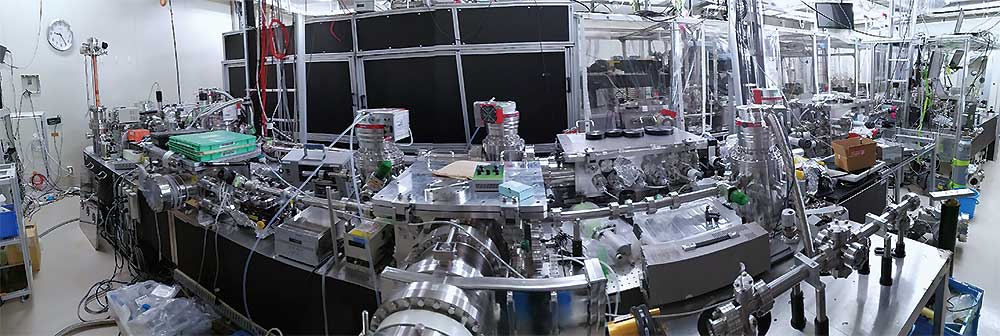Disclaimer: machine translated by DeepL which may contain errors.
The Pioneering World of Intense Lasers
Junji Iwasaki (Professor, Research Center for Ultrafast Intense Laser Fields)
With the recent development of intense ultrashort laser pulses, it has become possible to measure in real time ultrafast processes such as excitation of electrons in materials, subsequent distribution of electron energy, and conversion of electron energy to motion, which occur within 100 attoseconds (1 attosecond = 10-18 s ) to 100 femtoseconds (1 femtosecond = 10-15 s ). (1 femtosecond = 10-15 seconds). The extremely strong photoelectric field with an intensity exceeding 1013 W cm-2 generated by focusing an intense ultrashort laser pulse is called an intense photon field. In fact, real-time measurements of electronic excitation, vibrational motion, and dissociation processes of various materials have been carried out by time-resolved spectroscopy (pump-probe), and it is becoming clear how the electronic excitation of a material predestines various processes that occur thereafter. The key role of this research is played by the laser.
Lasers play an important role in this research, and I first became interested in lasers when I saw a nitrogen laser and a dye laser in the laboratory where I was assigned as an undergraduate. The monochromatic, intense visible laser light emitted from the dye lasers had a vivid green or red color that I had never seen before, and the speckle literally made them glow. Researching the properties and motion of materials using such laser light seemed like a calling for me. In graduate school, I was assigned the theme of assembling a near-infrared wavelength-tunable laser. As a graduate student in the Department of Chemistry, I could not fully understand why a visible laser light was converted to a near-infrared wavelength, and I remember that I struggled to understand it by reading a variety of literature in the physics and engineering fields. After obtaining my degree, I was assigned to work as a postdoctoral researcher in the Department of Physics at Laval University in Canada, where I encountered a variety of research themes using intense ultrashort laser pulses. Although he had a background in chemistry, he had been working in various fields related to lasers, but he had never felt the boundaries of his own Department. The field of laser science, which I thought of as a field of physics, encompassed a wide range of fields, including physics, chemistry, electrical engineering, and mechanical engineering, and what I had learned and thought about was useful wherever I did research.
 |
|||
| Near-infrared laser light harmonic generator and experimental apparatus for laser processing using extreme ultraviolet light pulses. | |||
Recently, our research group has been processing materials using extreme ultraviolet light pulses, which are wavelength-converted from near-infrared laser light by means of higher-order harmonic generation. However, in collaboration with a professor from the Department of Precision Engineering, Graduate School of Engineering School of Advanced Materials Science, we have developed a technique to focus extreme ultraviolet laser pulses to 0.5 μm or less, and have been able to process materials with a high melting point, such as metals. The research group has found that even materials with high melting points, such as metals, can be processed. In addition to various application research using extreme ultraviolet laser pulses, the research group is also developing intense ultrashort laser pulses and time-resolved measurement methods for materials on attosecond time scales. By combining these techniques, we hope to observe new properties of matter and the nature of physical and chemical phenomena.
Faculty of Science News, November 2021


